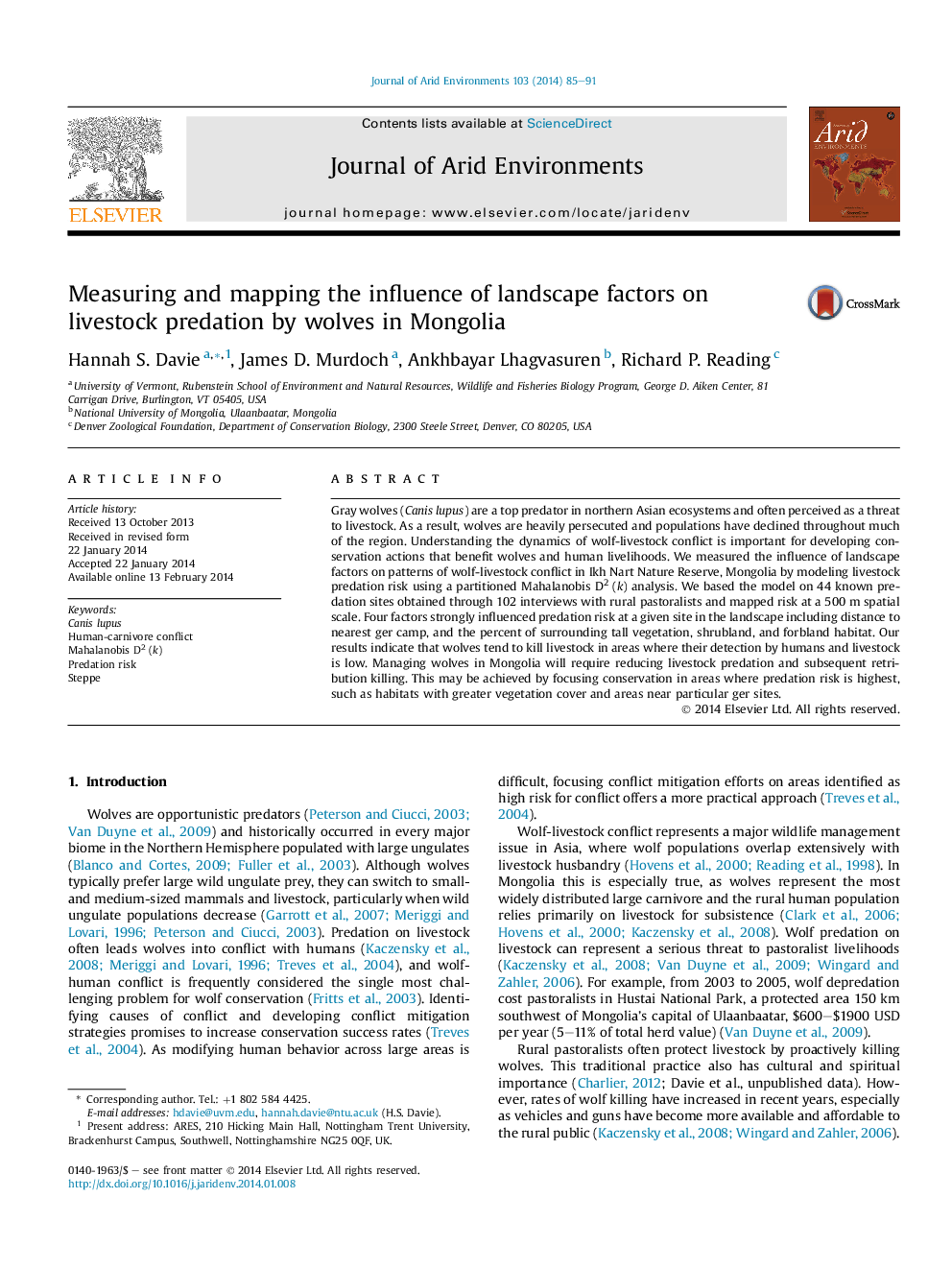| Article ID | Journal | Published Year | Pages | File Type |
|---|---|---|---|---|
| 6303497 | Journal of Arid Environments | 2014 | 7 Pages |
Abstract
Gray wolves (Canis lupus) are a top predator in northern Asian ecosystems and often perceived as a threat to livestock. As a result, wolves are heavily persecuted and populations have declined throughout much of the region. Understanding the dynamics of wolf-livestock conflict is important for developing conservation actions that benefit wolves and human livelihoods. We measured the influence of landscape factors on patterns of wolf-livestock conflict in Ikh Nart Nature Reserve, Mongolia by modeling livestock predation risk using a partitioned Mahalanobis D2 (k) analysis. We based the model on 44 known predation sites obtained through 102 interviews with rural pastoralists and mapped risk at a 500Â m spatial scale. Four factors strongly influenced predation risk at a given site in the landscape including distance to nearest ger camp, and the percent of surrounding tall vegetation, shrubland, and forbland habitat. Our results indicate that wolves tend to kill livestock in areas where their detection by humans and livestock is low. Managing wolves in Mongolia will require reducing livestock predation and subsequent retribution killing. This may be achieved by focusing conservation in areas where predation risk is highest, such as habitats with greater vegetation cover and areas near particular ger sites.
Related Topics
Physical Sciences and Engineering
Earth and Planetary Sciences
Earth-Surface Processes
Authors
Hannah S. Davie, James D. Murdoch, Ankhbayar Lhagvasuren, Richard P. Reading,
